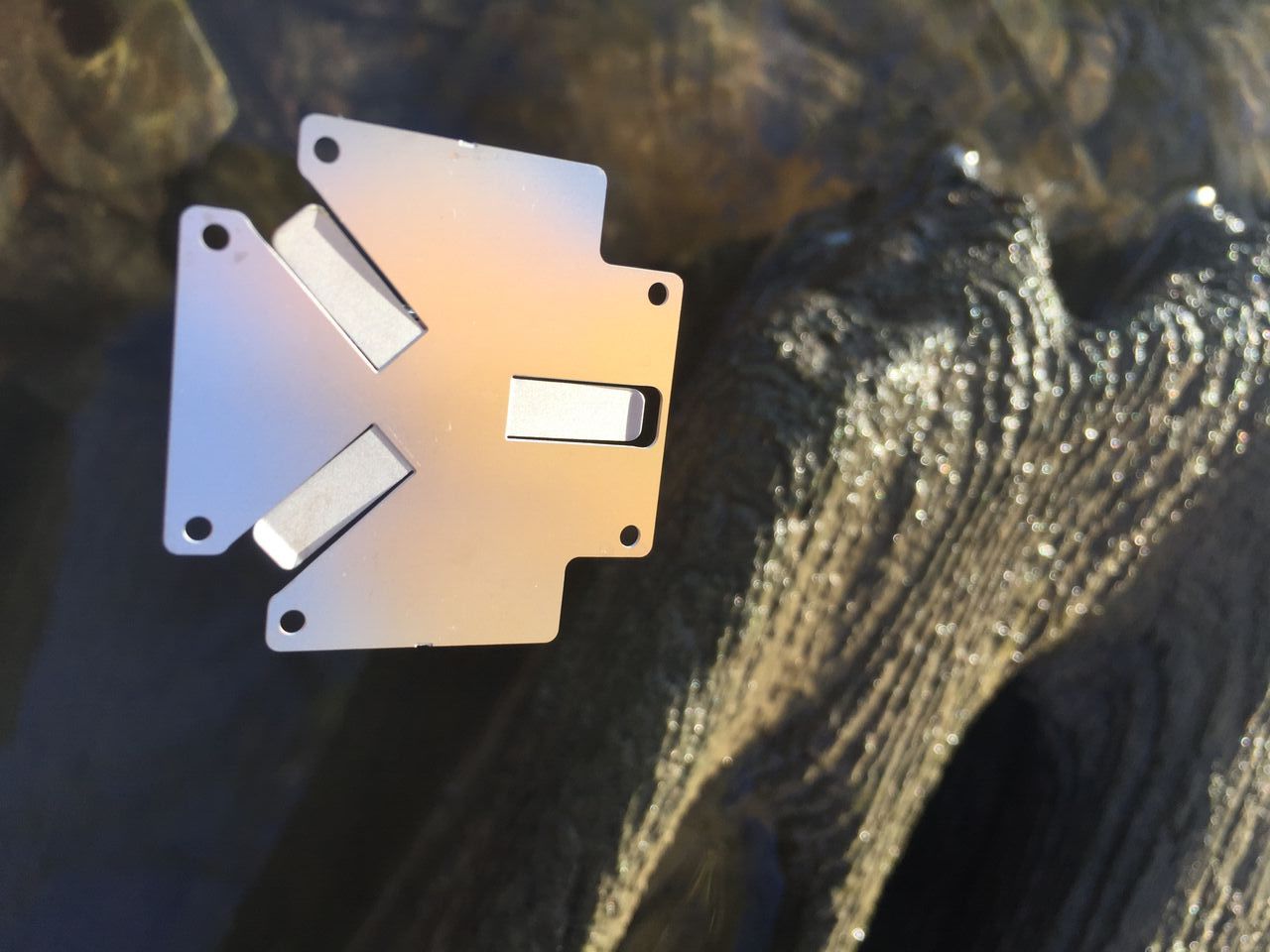
Sheet metal fabrication is a process that involves various techniques. While each comes with its own advantages, it’s important to consider how these benefits apply to your specific design.
To weigh your options, start out by learning about some of the most popular sheet metal fabrication techniques.
Popular Techniques in Sheet Metal Fabrication
Punching
As its name implies, punching involves using a punch press to push a tool through a metal part. This force creates a hole in the workpiece via shearing.
In the case of high production volumes, punching is a particularly cost-effective option for creating holes in metal parts. It also provides an easy way of producing holes of different shapes fast.
Punching does come with its down sides though. Tooling costs can become rather expensive, and secondary finishing operations are often needed to correct burrs on the design.
Stamping
While similar to punching, stamping involves using a stamp press to cut or mold metal into a net shape.
This sheet metal fabrication process shares many of the same advantages and disadvantages of punching. While cost-effective for high volume parts and highly repeatable, tooling and equipment costs can easily add up.
Laser Cutting
Laser cutting is a thermal process that uses a beam of coherent light to cut a metal workpiece. As the laser moves across the metal part, it cuts the details of the sheet metal individually.
Along with its reliability and ability to easily repeat, laser cutting offers the benefit of being able to cut materials of various thicknesses. There are, however, concerns as to poorly adjusted lasers causing burns as well as slow cutting speeds for thicker materials.
Water Jet Cutting
Water jet cutting involves using a high-pressure stream of water to cut through a workpiece. In some cases, the water is combined with an abrasive substance to cut through hard materials.
An advantage of water jet cutting is that material can be cut without affecting its natural structure. The process can also be used to create intricate cuts in sheet metal — an element that can prove difficult with other techniques.
Amongst its disadvantages are the time it takes for water jet cutters to break through materials, reducing overall productivity. Further, the technology itself is expensive, and the approach becomes less accurate as materials become thicker.
Chemical Etching
As a subtractive manufacturing process, chemical etching removes metal from a workpiece to produce parts with a specific shape and thickness. Temperature-regulated etching chemicals are used within the process to fuel this result.
With chemical etching, you get the benefits of fast turnaround times and high precision machining that is capable of tight tolerances. Completed parts are free of stresses and burrs, and production is economical.
Choosing the right sheet metal fabrication techniques has an important impact on your end product. In the case of complex, high-precision metal parts, chemical etching is the ideal option, delivering quality designs at an efficient pace.
Let the experts at Switzer help determine the best technique for your design project. Contact us today to get started.
.png)

